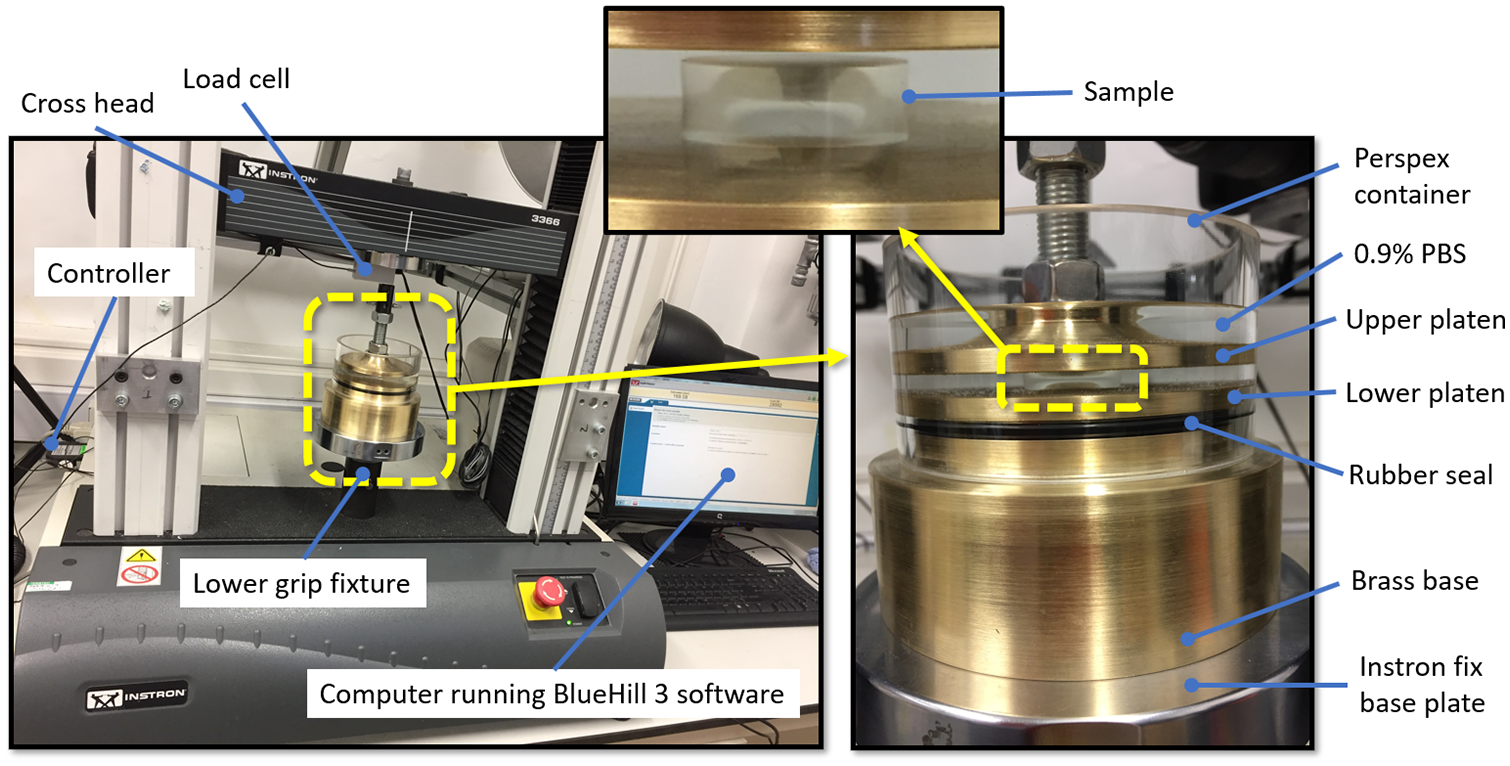Understanding Soft Contact Lenses: How Compression Affects Comfort and Performance
Authors: Shihab, A.H., Eliasy, A., Lopes, B.T., Wu, R., White, L., Jones, S., Geraghty, B., Joda, A., Elsheikh, A., Abass, A.
Journal: Plos One
Publication Date: Feb 2021
Compression test experimental setup showing the main components and the Instron machine
Summary:
Have you ever wondered how the stiffness of contact lens materials affects their comfort and performance on the eye? Our research paper dives into this very topic, examining the compressive behaviour of nine different soft contact lens materials.
In our study, we subjected various types of hydrogel and silicone-hydrogel contact lens materials to compression tests. These tests revealed that all of the materials exhibited nonlinear behaviour when compressed. This finding is crucial, as the compressive behaviour of contact lenses is often subject to the pressure exerted by the eyelid.
Our research shows that the compressive moduli of elasticity (a measure of stiffness) for these materials were generally higher than their tensile moduli of elasticity, meaning that they resist compression more than tension. This could lead to increased discomfort and poor optical performance in certain materials. On the other hand, a stiffer contact lens material may achieve excellent optical performance due to its dimensional stability on the eye, but this could come at the cost of user comfort.
We found that water content was inversely correlated with the moduli of elasticity under compression. This suggests that water content could be used as an indicator for material behaviour on the eye.
In addition to our lab-based experiments, we utilised Finite Element (FE) analysis to predict the geometry of soft lenses on the eye and their optical performance. An off-eye simulation was also carried out to investigate the effect of handling contact lenses made from these materials.
Our study emphasises the importance of understanding the compressive behaviour of soft contact lens materials in order to optimise their performance on the ocular surface. By considering these properties in their designs, the contact lens market can take steps towards creating the ideal lens concept.

